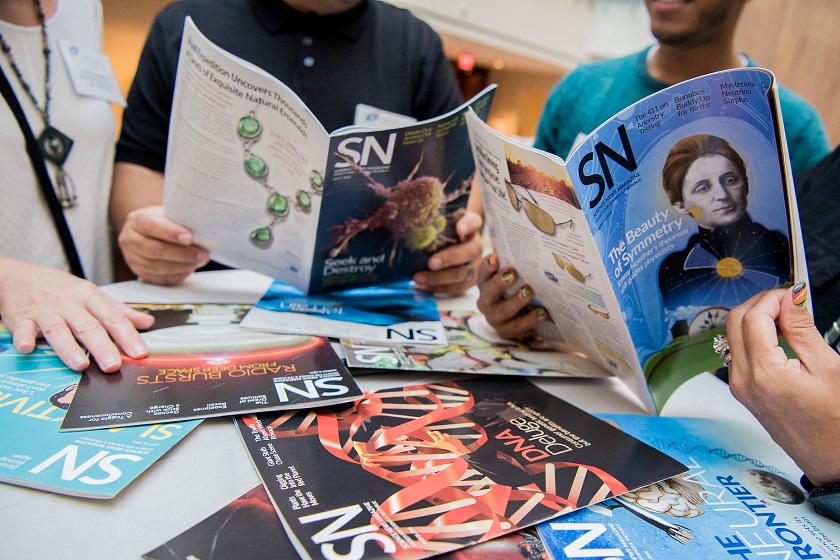How one Georgia teacher is using Science News in High Schools in her classroom

Tiffany Jones teaches in the Medical Science and Research Magnet program at South Cobb High School in Austell, Georgia. She is a strong advocate for Science News in High Schools, so much so that she took it upon herself to incorporate information about the Society for Science & the Public’s program in a session she led at the 2019 Georgia Science Teachers Association Annual Conference.
This is Tiffany’s fourth year of teaching Biology, Anatomy and Research II. She first heard about Science News in High Schools through social media. “I don’t remember if it was a promoted ad on Facebook or if the program was shared in one of the science teaching groups, but I immediately signed up. I had been looking at subscriptions to increase science literacy in my classroom without having the students read articles on copy paper. The program was a perfect fit for what I was looking for.”
We recently connected with Tiffany to find out more about her session and the impact Science News in High Schools has had in her classroom.

Photo courtesy of Society for Science & the Public.
How was Science News in High Schools (SNHS) incorporated into your session at the Georgia Science Teacher Association Conference? Why did you feel it was important to include?
Teachers want to increase literacy, but don’t have the time to spend an entire block reading and discussing an article. By using shorter articles and easy-to-implement strategies, we can expose the students to scientific writing and (hopefully) increase skills in science literacy, critical thinking and analyzing graphics. Science News in High Schools was a huge component of my session because I always get asked where teachers can find current science articles that are written at an approachable reading level of their students. Introducing the program to the audience of my session was extremely impactful, because educators could personally witness the quality of articles in the magazines along with the helpful Educator Guide teaching resources. Students are accustomed to teachers printing off articles from websites or making photocopies of newspaper articles so getting to hold a color magazine might seem unnecessary, but does have an impact.

In your experience, why is SNHS helpful? Why should other educators not currently participating in the program consider otherwise?
The magazines have increased student buy-in which can be a challenge in high school classrooms. I have seen an increase in my student’s biology scores since implementing assignments that include Science News in High Schools resources. Students can have a voice in which article they want to read as well. Sometimes I instruct the students to pick any issue of the magazine and read one of the articles labeled “evolution.” They can flip through a few magazines until they find something that interests them —they choose the article they want to explore. When students are interested in what they are reading, then they can read for purpose rather than compliance. I have found that students will be flipping through the magazines during our literacy sessions, come across a photo or graphic and become enticed to read the article. They end up learning topics that don’t even apply to our current content, but they are analyzing science text, which is the main goal of the literacy time in my classroom.
How are you using the program resources in your classroom?
I use the resources every day. Articles are supplied weekly by the school support team or we can pull our own articles and activities. I have my students design an experiment that may disprove new information, or I have them pull vocabulary from context when I assign specific articles. I have also used anticipation guides to make the students think about bias or controversial issues. There are so many strategies to use with the articles that are very easy to implement seamlessly.
What has the impact been on your students?
My students have shown tremendous growth in analyzing graphics and thinking critically about scientific topics. I have seen an increase in scores each year as the students think more critically. The magazines spark their curiosity on a topic and making them read for interest. The program gives them examples of science journalism writing, that isn’t a lab report or review of a formal research study. Impactful science writing can be short and concise while giving the necessary information to the intended audience.
What are some best practices/advice you’d like to share with other educators using SNHS?
Definitely, discover what fits your student population. That could mean assigning articles and walking the students through how to analyze information or it could mean giving students more choice. The Educator Guides are phenomenal resources to get started. My first semester in the program, I only used the Educator Guides with the accompanying articles until I found additional methods that worked for my teaching style and my student ability level.


